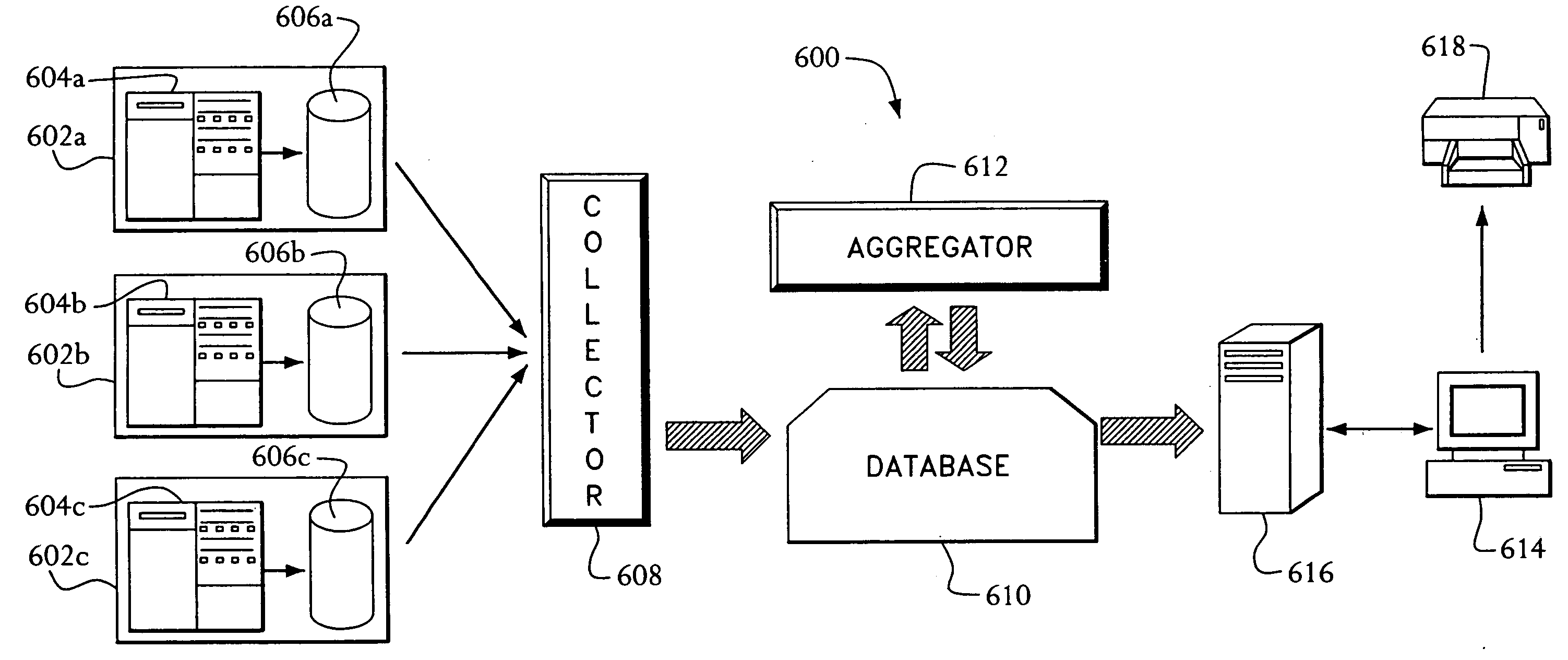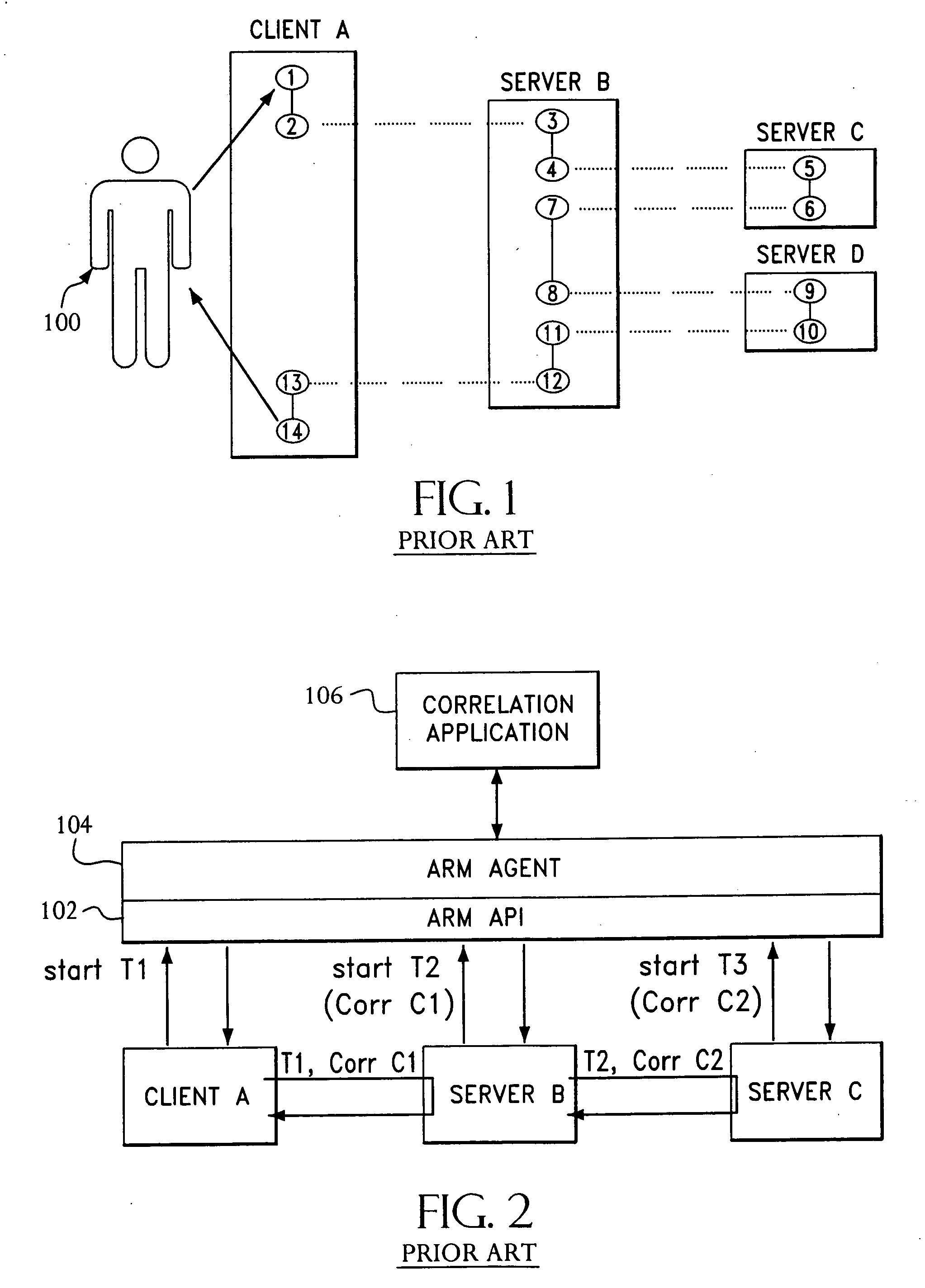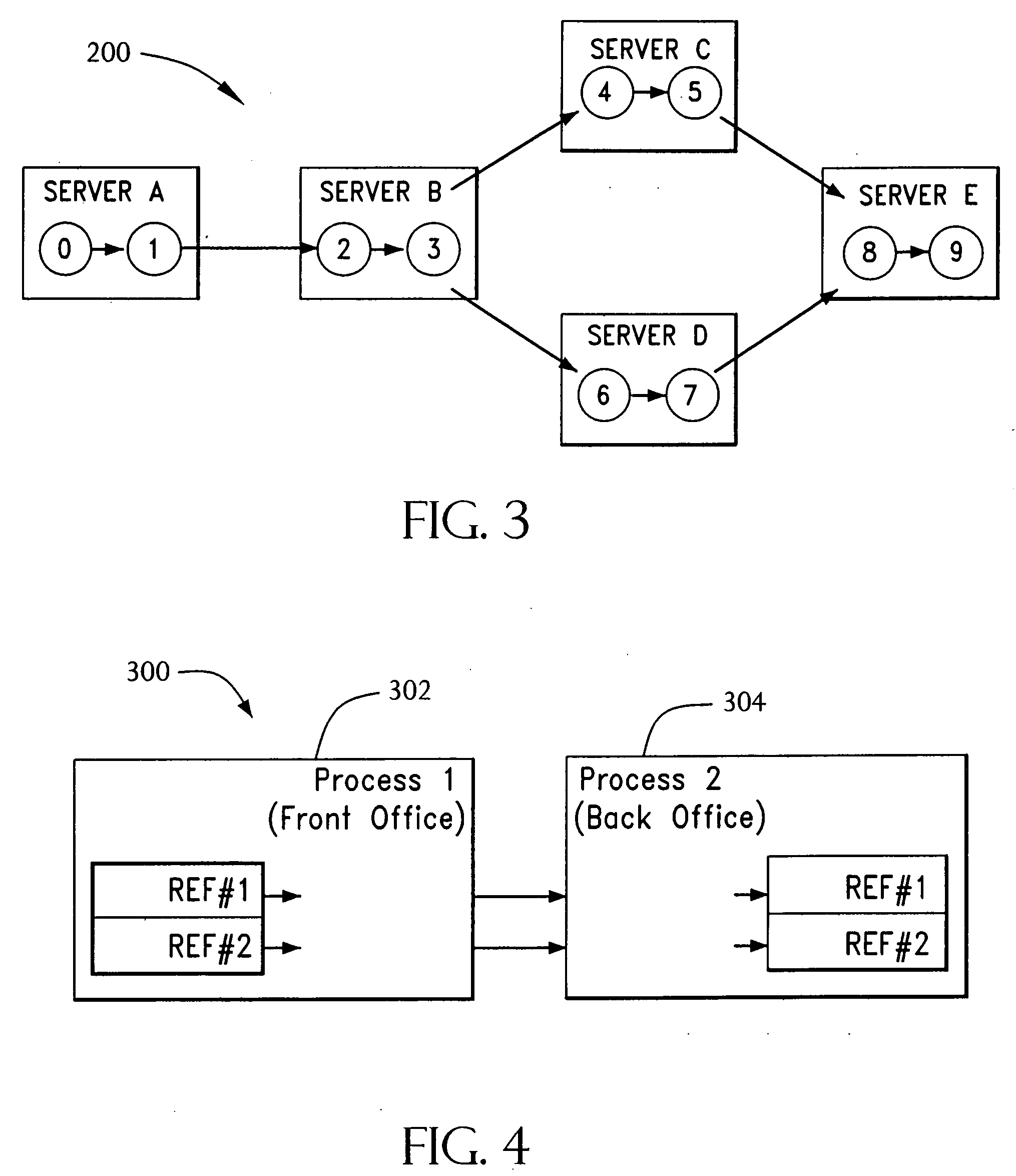Computer system performance monitoring using transaction latency data
a technology of transaction latency and computer system, applied in the field of system and method of monitoring the performance of computer systems, can solve the problems of complex arm api architecture, data speed mismatch, storage and hard disk access delay, etc., and achieves low cost, low cost, and high scalable
- Summary
- Abstract
- Description
- Claims
- Application Information
AI Technical Summary
Benefits of technology
Problems solved by technology
Method used
Image
Examples
Embodiment Construction
[0030] Referring to FIG. 1, there is shown a client-server computer system topology whose transactional latency may be measured by presently available IT performance optimization tools. In FIG. 1, Points 1 to 14 represent the flow of business or other transactional information through multiple transactions on multiple computers respectively named CLIENT A, SERVER B, SERVER C and SERVER D. The client-server topology represented in FIG. 1 is a nested parent-child type of topology wherein completed transaction 1 / 14 is comprised of a number of smaller nested transactions or subtransactions. Transaction 1 / 14 typically includes an initial transactional request made by user 100 (step 1) to a suitable computer input / output (I / O) device which culminates in the provision of the requested information from the I / O device to the user (step 14). Transaction 1 / 14 represents a transaction that is the parent of transaction 2 / 13, i.e., 2 / 13 is nested within 1 / 14. Transaction 2 / 13, in turn, is the par...
PUM
 Login to View More
Login to View More Abstract
Description
Claims
Application Information
 Login to View More
Login to View More - R&D
- Intellectual Property
- Life Sciences
- Materials
- Tech Scout
- Unparalleled Data Quality
- Higher Quality Content
- 60% Fewer Hallucinations
Browse by: Latest US Patents, China's latest patents, Technical Efficacy Thesaurus, Application Domain, Technology Topic, Popular Technical Reports.
© 2025 PatSnap. All rights reserved.Legal|Privacy policy|Modern Slavery Act Transparency Statement|Sitemap|About US| Contact US: help@patsnap.com



